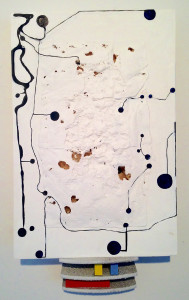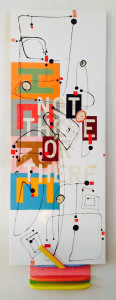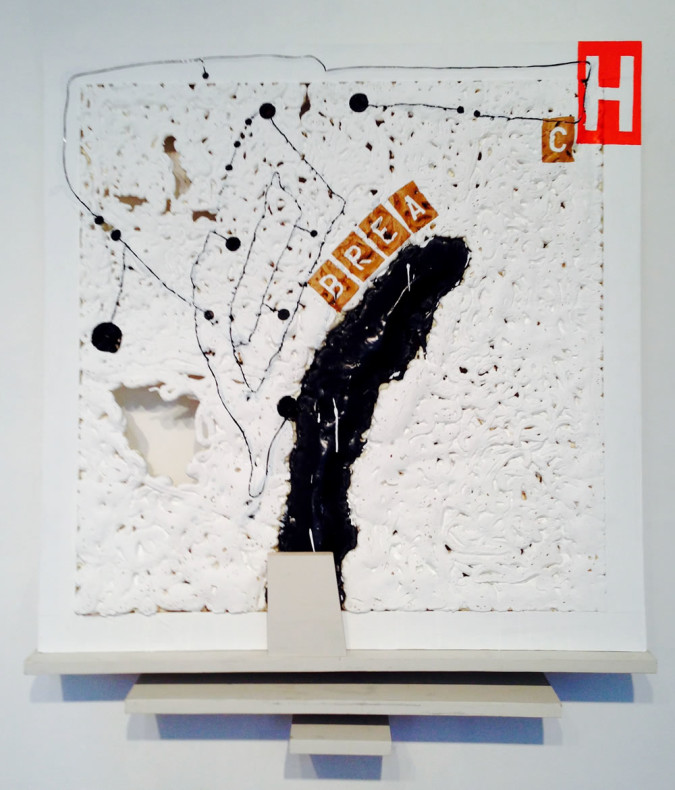David Craven
QUESTION:
Lately you have begun using insulating foam as a ground for paintings. These surfaces bloom outward, collapse inward, leave gaping holes, boil over the frame. In addition, often you include shelves or other three- dimensional elements in your work. At what point–if any–does your work become sculpture, or, to put it another way, when there are dimensional aspects what keeps the work in the category of painting rather than sculpture?
ANSWER:
I’ve always had three-d elements in my work ever since I was a student and I would wonder: are these edging into sculpture? However, all my dynamic examples were involved in crossover, for example, Serra’s drawings, whole bunches of California artists like Ben Kinmont—a conceptualist but no Kosuth.
One of the influences on me was Frank Stella. Stellas’s canvases were on thick, three- inch stretchers and the painting therewith became an object. I have always been a literalist when it comes to painting. And it continues. I am not a purist but a literalist. The difference is a purist is somebody like Mondrian. A literalist is always contaminated—by the reality of something. That’s the issue about the frames—I could say they are about moving into the real world but I don’t like those terms. I just want to move them into the room.
I learned all this from Mondrian’s last painting –in MOMA—they have that unfinished painting with masking tape. I said what’s unfinished about that? That’s when Mondrian ceased to be a purist and became a literalist. All that tape on them.
The shelves are an issue of presentation— like the frame—bringing it into the room again. The normal feeling about the domestic. I don’t see myself as an ideologue. Part of my problem with painting now is that everybody is so mart that all they do is illustration. I would define illustration as the avoidance of struggle.
It’s very hard to talk about work in the present. I just really have been into the flow of surprise. I thought that was our job—to take risks. I am always in the throes.
The regular appearance and reappearance of language is another proof that I am not a purist. Language as an element in the work came out of one studio visit with Bruce Ferguson. I was still at 211 in Tribeca. “I just wish you could get more of your personality in the work,” he said. The only way I could think of to do this was through language. Humor and pathos come through language. My body of work had been pretty consistent but the language was a very big wrinkle. It makes me a little worried because there is an issue of privacy and you can’t just let it all out. Language is sometimes too self-revealing yet at the same time masking. Those go hand in hand. So my last-to-next body of work had a lot of language and now none. So that’s the history of my career. You do stuff and then recoil from it.








